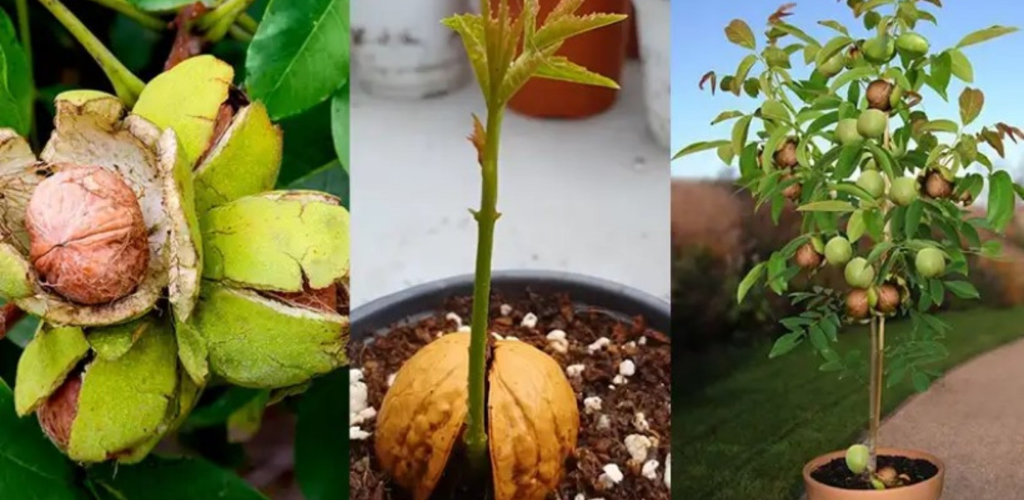A Complete Guide to Propagate Walnut Trees from Seeds
Walnut trees are celebrated for their delicious nuts and prized elegant wood. Growing a walnut tree from seed can be a rewarding and environmentally friendly endeavor. This comprehensive guide offers a step-by-step approach to help you grow a walnut tree from seed. It covers various germination techniques and provides essential knowledge to ensure the success and health of your walnut tree.
Step 1: Gather your materials
Before you begin, make sure you have the following materials on hand:Walnut seeds (obtained from ripe walnuts) A pot or planting container Good quality potting soil Plastic film or a plastic bag A sunny location or grow light Watering or spray bottle Pruning shears (for later stages)
Step 2: Seed Selection
Select robust, mature walnut seeds. You can get them in the wild, buy them online, or collect them from a mature walnut tree. Make sure the seeds are fully developed, full, and free of damage or mold.
Step 3: Germination Methods
There are several methods for germinating walnut seeds. Here are three common approaches:
Method 1: Cold StratificationFill a container with potting soil, leaving a one-inch space at the top. Plant the walnut seed about an inch deep. Moisten the soil, making sure it is moist but not saturated. Cover the container with plastic wrap or place inside a plastic bag. Refrigerate the container for 8-12 weeks, mimicking winter conditions. After the stratification period, place the container in a sunny location or use a grow light.
Method 2: Soaking and plantingSoak the walnut seeds in water for 24-48 hours to soften the outer shell. Plant the seeds about an inch deep in a container with potting soil. Moisten the soil, preventing it from becoming soggy. Place the container in a location sunny or use a grow light.
Method 3: Sowing in autumnIn the fall, sow walnut seeds directly into the soil where you want your tree to grow. Dig a hole about two inches deep and place the seed inside. Cover it with soil and mark the spot. Wait until spring and the tree will grow. Walnut tree will begin to grow.
Step 4: Care and Maintenance
Regardless of the germination method chosen, caring for walnut seedlings requires proper attention:Keep the soil consistently moist, avoiding waterlogging. Ensure 6-8 hours of sunlight or adequate exposure to grow light daily. Transplant seedlings to a larger pot or preferred outdoor location when they reach a height of 4-6 inches .Protect young trees from pests and animals with fencing or netting. Prune any dead or diseased branches as the tree matures. Regularly fertilize the tree with a balanced, slow-release fertilizer.
Step 5: Transplant Outdoors
When your walnut tree is about 2-3 years old and about 3-4 feet tall, it is time to transplant it to its permanent outdoor location. Follow these steps:Choose a sunny location with well-drained soil. Dig a hole twice as wide as the root ball and of similar depth. Carefully remove the tree from its container, avoiding disturbing the roots. Place the tree in the hole, making sure the top The top of the root ball is level with the soil surface. Fill the hole with soil, compacting it gently as you go. Water the tree thoroughly to settle the soil.
Conclusion:
Growing a walnut tree from seed is a rewarding and environmentally friendly activity. By following these guidelines and selecting the germination method that best suits you, you will be able to care for a walnut tree that will provide shade, luscious wood, and delicious nuts for generations. With patience and proper care, watch your walnut tree blossom into a splendid, bountiful addition to your garden or landscape.
